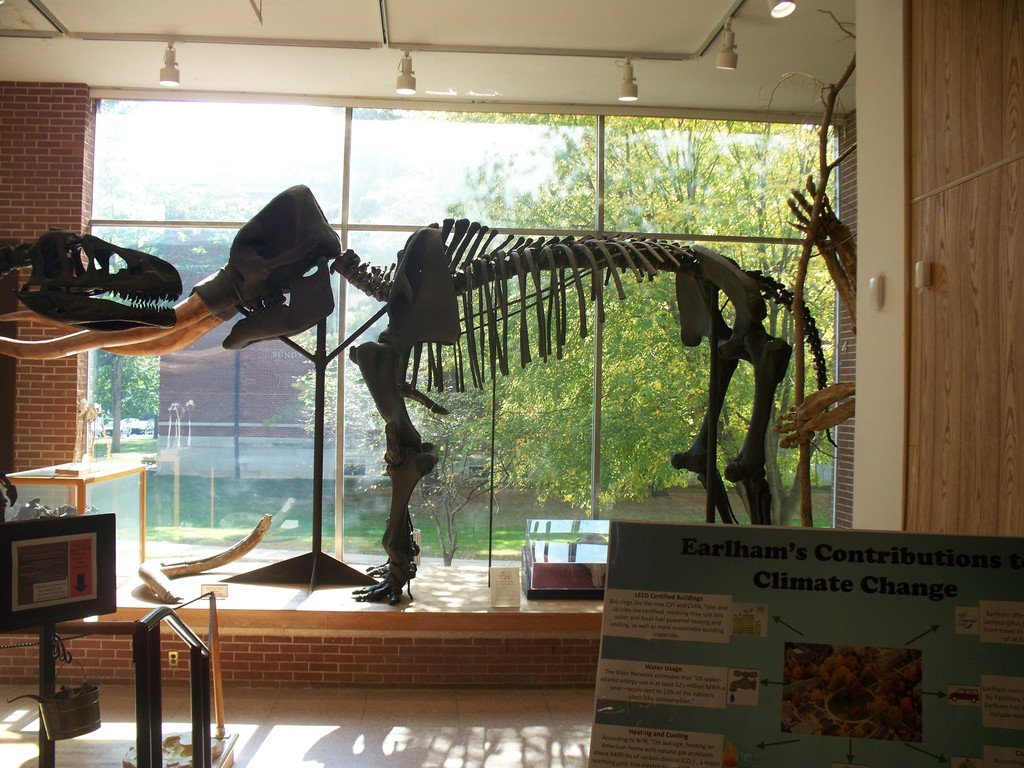Description: Mammut americanum, or the American Mastodon lived around 12,000 years ago during the Pleistocene. The American Mastodon inhabited wet, lush ice-age forests and ate plants (branches, bark, cones, leaves, etc.). The estimated weight of a typical mastodon was approximately 10 tons. The major theory of its demise was over-hunting by humans. It should be noted that mastodons did live alongside mammoths, though they are different species.
This specimen is one of three “signature specimens” of the Joseph Moore Museum. According to the history of the museum, the specimen was originally assembled by Professor Joseph Moore and his student Caswell Graves in 1895. The mastodon is in fact, built from 2 skeletons, one from New Paris, Ohio (directly east of Richmond, Indiana) and one from Randolph County, Indiana. The mastodon was then housed in Lindley Hall on Earlham College’s campus. Ten years later, Joseph Moore passed away and Allan D. Hole was named curator.
On October 23, 1924, Lindley Hall caught on fire and the students and Curator Dr. Hole rushed to save as many specimens as they could. Amazingly, the mastodon was saved from falling debris by a steel beam. In 1955, the mastodon was remounted in its current location off Dennis Hall.
In the case directly left of the mastodon, is the exhibit containing the giant beaver, another one of Joseph Moore's signature specimens.


All pictures, text, design © Forum FMF 2006-2025


